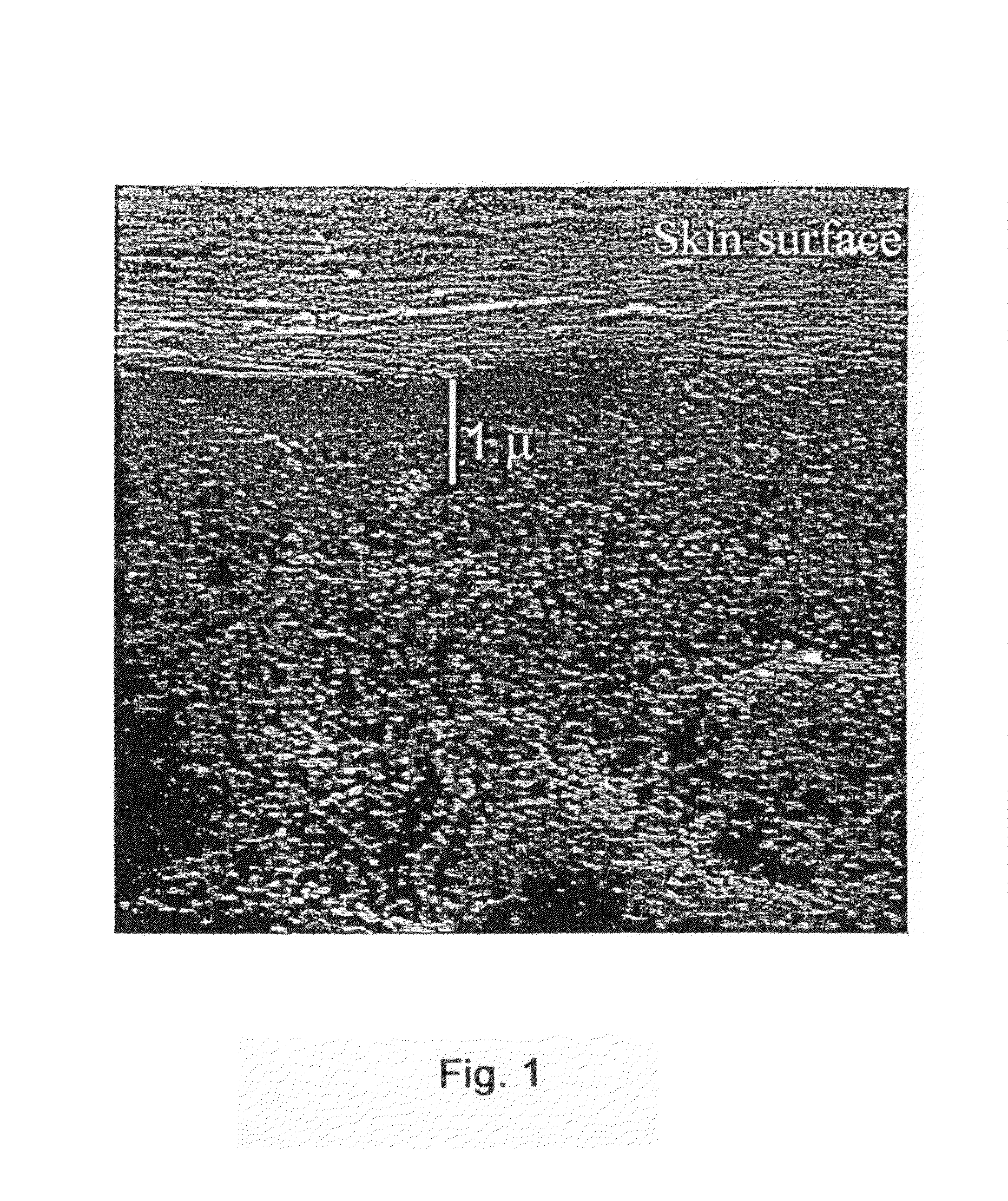Permeable polyaniline articles for gas separation
a technology of polyaniline and gas separation, applied in the direction of non-metal conductors, conductors, organic conductors, etc., can solve the problems of high capital costs, poor energy efficiency, secondary pollution generation, etc., and achieve the commercial potential of gas-selective polyaniline membranes
- Summary
- Abstract
- Description
- Claims
- Application Information
AI Technical Summary
Benefits of technology
Problems solved by technology
Method used
Image
Examples
example 1
Gas Permeability of ISAMs Prepared from Highly Concentrated, High-Molecular Weight (Mw≧120,000) Polyaniline Emeraldine Base Solutions Using Secondary Amines as Gel Inhibitors:
[0034]To a solution of 1.416 g of NMP and 171 mg of piperazine, 300 mg of high-molecular weight (HMW) polyaniline EB prepared at −45° C. was added, the resulting mixture stirred for a few minutes and placed in an oven at 58° C. for approximately 5 min. until a homogeneous solution was formed. The mass content of HMW EB in this solution was ˜15.9% w / w. Once the solution was formed, it was spread onto a glass plate and the wet film was drawn by setting the draw-down blade at 0.006 in. The film was then immersed in 15° C. water nonsolvent. The IP film was kept in the water for 24 h, air dried for a few hours and then placed overnight in a vacuum oven. A 100% silicon elastomer caulking layer was then applied to the membrane surface and allowed to dry overnight before the membrane was placed inside the test cell hel...
example 2
Gas Permeability of ISAMs Prepared from >20% w / w of Medium-Molecular Weight (100,000≦Mw<120,000) EB Polyaniline Solutions:
[0035]To a solution containing 6.237 g of NMP and 593 mg of heptamethyleneimine, 1.790 g of medium-molecular weight EB polyaniline (from Monsanto, Inc.) was added, the mixture stirred for a several minutes and placed in an oven at 55° C. oven for approximately 25 min. when a homogeneous solution was formed. The mass content of HMW EB in this solution was −20.8% w / w. Once the solution was formed, it was spread onto a glass plate and the wet film was drawn by setting the draw down blade to at 0.006 in. It was then immersed in 17° C. water, where it was kept for 24 hours, air dried for several hours and placed inside a vacuum oven overnight. A 100% silicon elastomer caulking layer was applied to the membrane surface and dried overnight before being placed inside the test cell at 27° C. for measurement of the gas permeation properties. Table 2 shows the results of th...
example 3
Gas permeability of the ISAM Membrane Prepared from >20% w / w of Medium-Molecular Weight (100,000≦Mw<120,000) EB Polyaniline Solutions from a Second Commercial manufacturer thereof:
[0036]To a solution of 3.166 g of NMP and 150 mg of 3,3-dimethylpiperidine, 911 mg of medium-molecular weight EB polyaniline (from NESTE Oy, Inc.) was added, the mixture stirred for several minutes and placed in an oven at 60° C. for approximately 20 min. until a homogeneous solution was formed. The mass content of NESTE EB in this solution was ˜21.6% w / w. The solution was poured onto a glass plate and the wet film was drawn by setting the draw down blade to 0.006 in. It was then immersed in water at 15° C. where it was kept for 24 h. The IP film was air dried for several hours and placed in a vacuum oven overnight. A 100% silicon elastomer caulking layer was applied to the membrane surface and dried overnight before being placed inside the test cell to measure the gas permeation properties at 27° C. Table...
PUM
| Property | Measurement | Unit |
|---|---|---|
| w/w | aaaaa | aaaaa |
| kinetic diameters | aaaaa | aaaaa |
| pressures | aaaaa | aaaaa |
Abstract
Description
Claims
Application Information
 Login to View More
Login to View More - R&D
- Intellectual Property
- Life Sciences
- Materials
- Tech Scout
- Unparalleled Data Quality
- Higher Quality Content
- 60% Fewer Hallucinations
Browse by: Latest US Patents, China's latest patents, Technical Efficacy Thesaurus, Application Domain, Technology Topic, Popular Technical Reports.
© 2025 PatSnap. All rights reserved.Legal|Privacy policy|Modern Slavery Act Transparency Statement|Sitemap|About US| Contact US: help@patsnap.com



